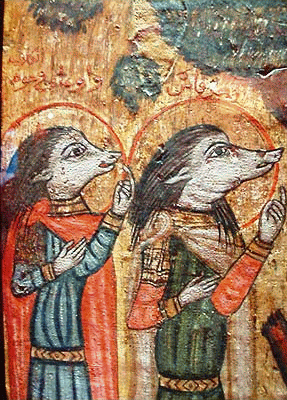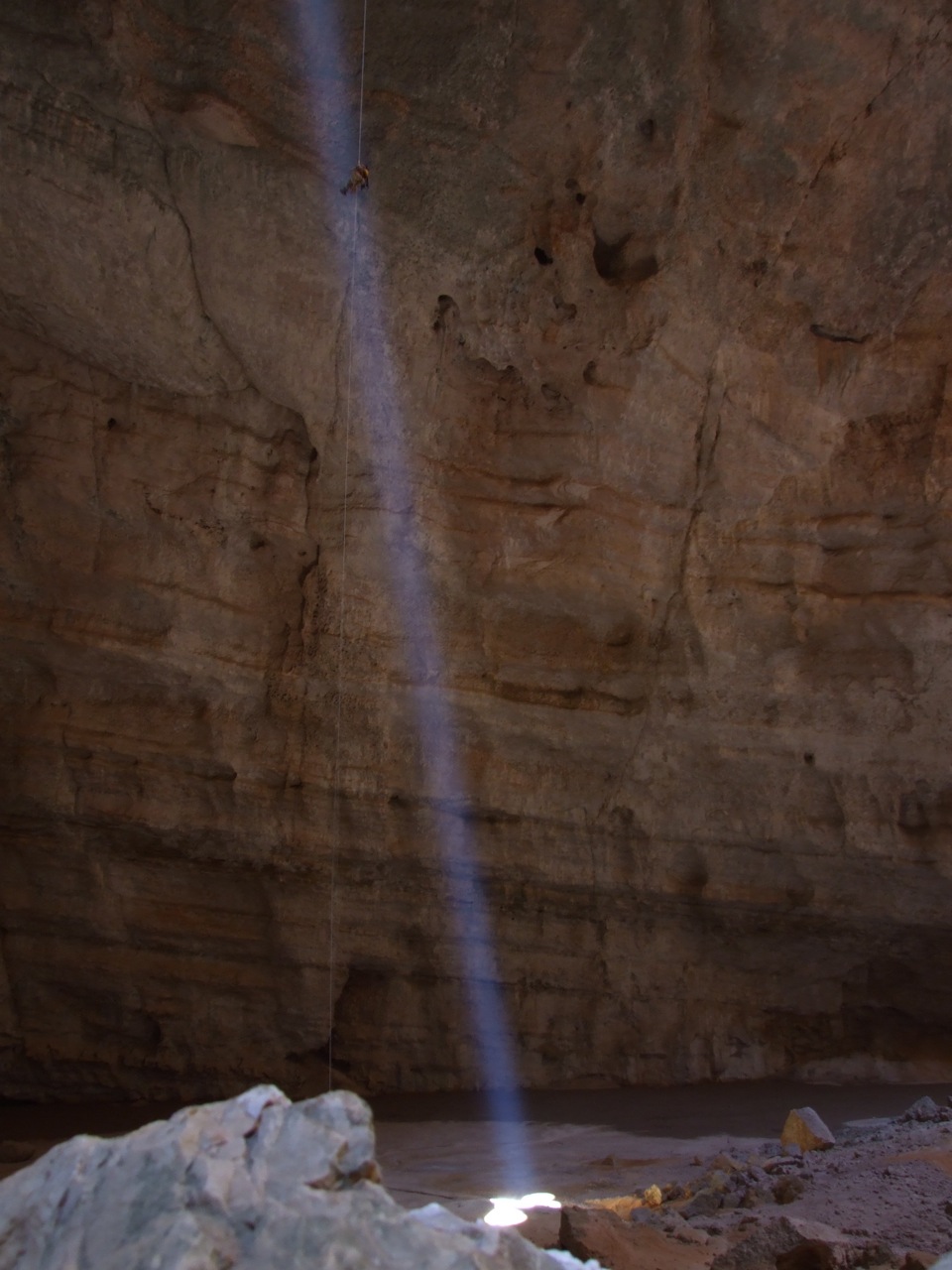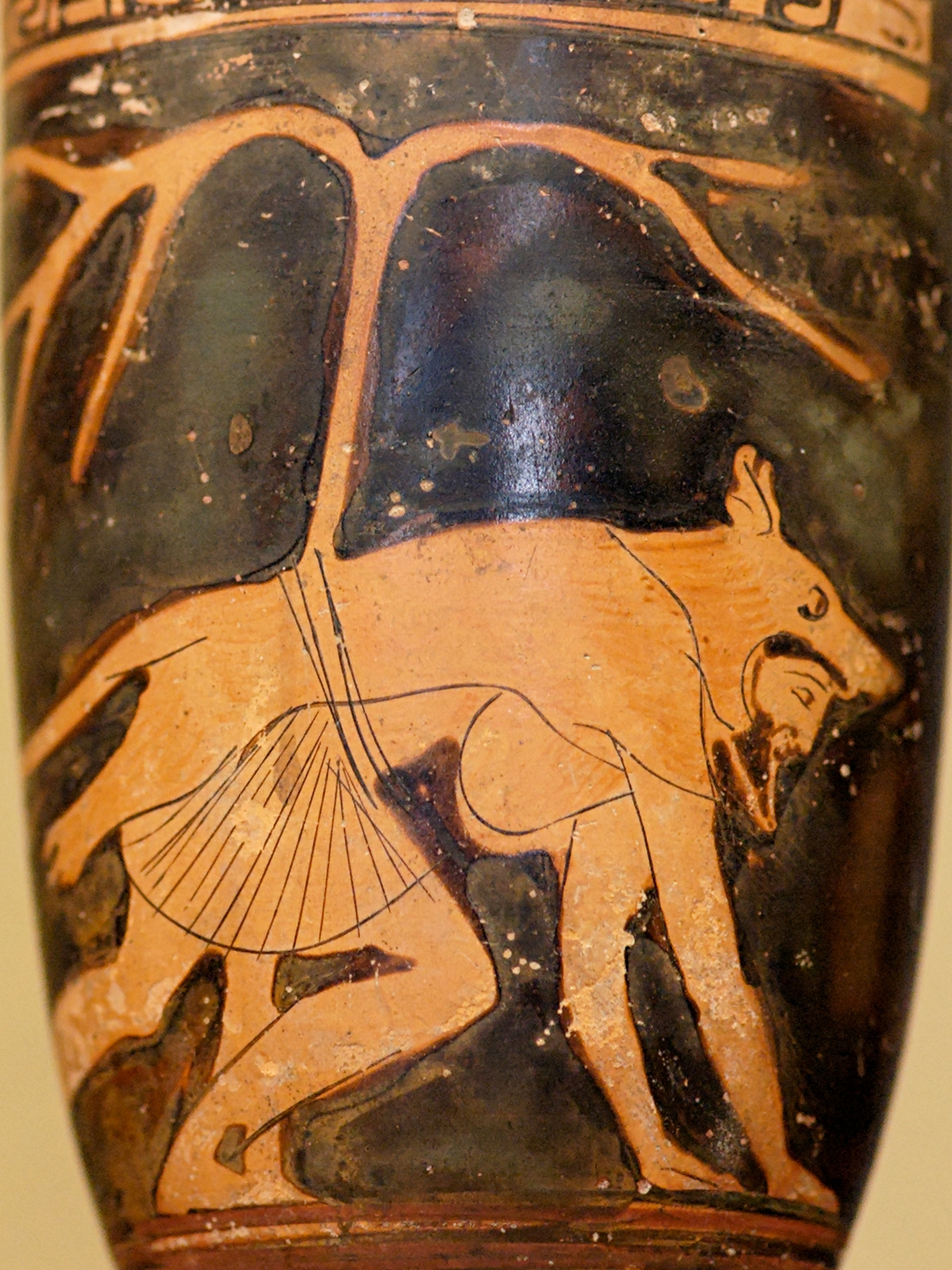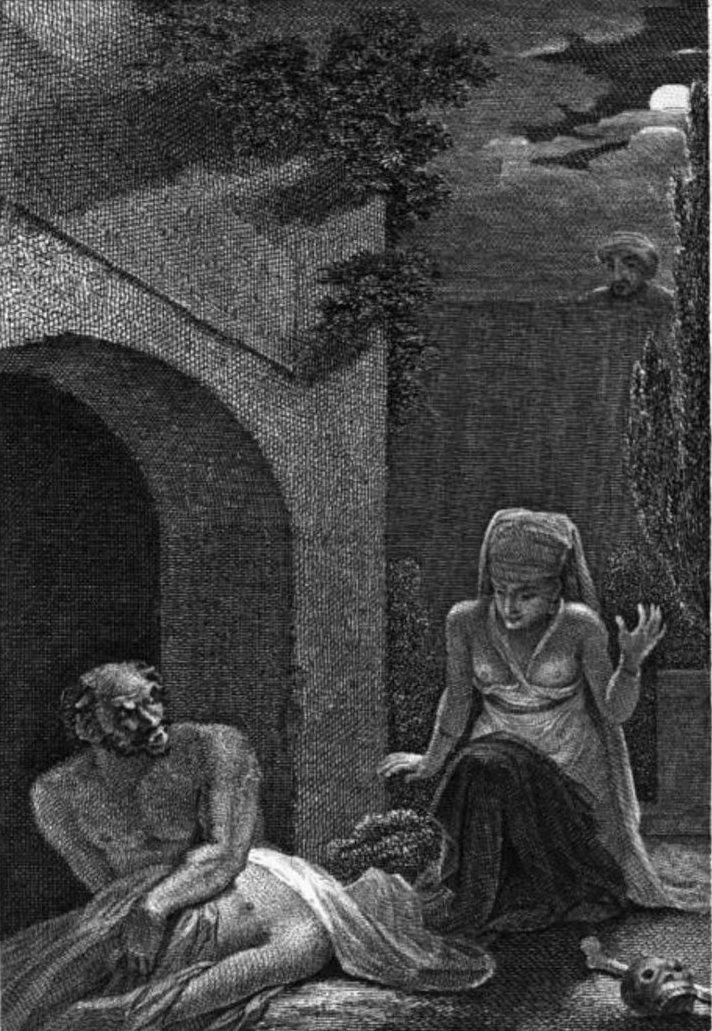|
Qutrub
A qutrub () in Arabian folklore is a type of jinn or demon, likened to an "Arabian 'werewolf'",Mythology in the Middle Ages: Heroic Tales of Monsters, Magic, and Might By Christopher R. Fee similar to a ghoul because it was said to haunt graveyards and eat corpses. The qutrub also appear as monsters in the role-playing game ''Final Fantasy XI''. See also * Cynocephaly * Sila Sila may refer to : Places and jurisdictions ; Asia * Silla, one of the three kingdoms of ancient Korea * Sila, Abu Dhabi, United Arab Emirates ; Europe * La Sila, a mountainous area of Calabria, Italy ** Sila National Park * Siła, Warmian-Ma ... References Vana'diel Bestiary for Final Fantasy XI: Qutrub (Allakhazam.com) Arabian legendary creatures Jinn Demons in Islam Demons Devils Undead Ghouls {{MEast-myth-stub ... [...More Info...] [...Related Items...] OR: [Wikipedia] [Google] [Baidu] |
Cynocephaly
The characteristic of cynocephaly, or cynocephalus (), having the head of a canid, typically that of a dog or jackal, is a widely attested mythical phenomenon existing in many different forms and contexts. The literal meaning of "cynocephaly" is "dog-headed"; however, that this refers to a human body with a dog head is implied. Such cynocephalics are known in mythology and legend from many parts of the world, including ancient Egypt, India, Greece, and China. Further mentions come from the medieval East and Europe. In modern popular culture cynocephalics are also encountered as characters in books, comics, and graphic novels. Cynocephaly is generally distinguished from lycanthropy (werewolfism) and dogs that can talk. In addition, the Greeks and Romans called a species of apes cynocephalus (these apes are suspected to be baboons). Etymology The word ''cynocephaly'' is taken (through Latin) from the Greek word κυνοκέφαλοι ''kynokephaloi'', plural of the word κυ ... [...More Info...] [...Related Items...] OR: [Wikipedia] [Google] [Baidu] |
Jinn
Jinn ( ar, , ') – also romanized as djinn or anglicized as genies (with the broader meaning of spirit or demon, depending on sources) – are invisible creatures in early pre-Islamic Arabian religious systems and later in Islamic mythology and theology. Like humans, they are accountable for their deeds, can be either believers (''Muslim'') or unbelievers (''kafir''); depending on whether they accept God's guidance. Since jinn are neither innately evil nor innately good, Islam acknowledged spirits from other religions and was able to adapt spirits from other religions during its expansion. Jinn are not a strictly Islamic concept; they may represent several Religion in pre-Islamic Arabia, pagan beliefs integrated into Islam. To assert a strict monotheism and the Islamic concept of ''Tauhid'', Islam denies all affinities between the jinn and God, thus placing the jinn parallel to humans, also subject to God's judgment and afterlife. The Quran condemns the pre-Islamic ... [...More Info...] [...Related Items...] OR: [Wikipedia] [Google] [Baidu] |
Undead
The undead are beings in mythology, legend, or fiction that are deceased but behave as if alive. Most commonly the term refers to corporeal forms of formerly-alive humans, such as mummies, vampires, and zombies, who have been reanimated by supernatural means, technology, or disease. In some cases (for example in Dungeons & Dragons) the term also includes incorporeal forms of the dead, such as ghosts. The undead are featured in the belief systems of most cultures, and appear in many works of fantasy and horror fiction. The term is also occasionally used for real-life attempts to resurrect the dead with science and technology, from early experiments like Robert E. Cornish's to future sciences such as "chemical brain preservation" and " cryonics." History Bram Stoker considered using the title, ''The Un-Dead'', for his novel '' Dracula'' (1897), and use of the term in the novel is mostly responsible for the modern sense of the word. The word does appear in English before ... [...More Info...] [...Related Items...] OR: [Wikipedia] [Google] [Baidu] |
Werewolf
In folklore, a werewolf (), or occasionally lycanthrope (; ; uk, Вовкулака, Vovkulaka), is an individual that can shapeshift into a wolf (or, especially in modern film, a therianthropic hybrid wolf-like creature), either purposely or after being placed under a curse or affliction (often a bite or the occasional scratch from another werewolf) with the transformations occurring on the night of a full moon. Early sources for belief in this ability or affliction, called lycanthropy (), are Petronius (27–66) and Gervase of Tilbury (1150–1228). The werewolf is a widespread concept in European folklore, existing in many variants, which are related by a common development of a Christian interpretation of underlying European folklore developed during the medieval period. From the early modern period, werewolf beliefs also spread to the New World with colonialism. Belief in werewolves developed in parallel to the belief in witches, in the course of the Late Middle ... [...More Info...] [...Related Items...] OR: [Wikipedia] [Google] [Baidu] |
Christopher R
Christopher is the English version of a Europe-wide name derived from the Greek name Χριστόφορος (''Christophoros'' or '' Christoforos''). The constituent parts are Χριστός (''Christós''), "Christ" or "Anointed", and φέρειν (''phérein''), "to bear"; hence the "Christ-bearer". As a given name, 'Christopher' has been in use since the 10th century. In English, Christopher may be abbreviated as " Chris", "Topher", and sometimes "Kit". It was frequently the most popular male first name in the United Kingdom, having been in the top twenty in England and Wales from the 1940s until 1995, although it has since dropped out of the top 100. The name is most common in England and not so common in Wales, Scotland, or Ireland. People with the given name Antiquity and Middle Ages * Saint Christopher (died 251), saint venerated by Catholics and Orthodox Christians * Christopher (Domestic of the Schools) (fl. 870s), Byzantine general * Christopher Lekapenos (died 931) ... [...More Info...] [...Related Items...] OR: [Wikipedia] [Google] [Baidu] |
Ghoul
A ghoul ( ar, غول, ') is a demon-like being or monstrous humanoid. The concept originated in pre-Islamic Arabian religion, associated with graveyards and the consumption of human flesh. Modern fiction often uses the term to label a certain kind of undead monster. By extension, the word ghoul is also used in a derogatory sense to refer to a person who delights in the macabre or whose occupation directly involves death, such as a gravedigger or graverobber. Etymology Ghoul is from the Arabic ''ghūl'', from ''ghāla'', "to seize". In Arabic, the term is also sometimes used to describe a greedy or gluttonous individual. See also the etymology of gal and gala: "to cast spells," "scream," "crow," and its association with "warlike ardor," "wrath," and the Akkadian " gallu," which refer to demons of the underworld. The term was first used in English literature in 1786 in William Beckford's Orientalist novel ''Vathek'', which describes the ''ghūl'' of Arabic folklore ... [...More Info...] [...Related Items...] OR: [Wikipedia] [Google] [Baidu] |
Final Fantasy XI
also known as ''Final Fantasy XI Online'', is a massively multiplayer online role-playing game (MMORPG), originally developed and published by Squaresoft and then published by Square Enix as the eleventh main installment of the ''Final Fantasy'' series. Designed and produced by Hiromichi Tanaka, it was released in Japan on May 16, 2002, for PlayStation 2 and Microsoft Windows-based personal computers in November of that year. The game was the first MMORPG to offer cross-platform play between PlayStation 2 and PC. It was later released for the Xbox 360 in April 2006. All versions of the game require a monthly subscription to play. The story is set in the fantasy world of Vana'diel, where player-created avatars can both compete and cooperate in a variety of objectives to develop an assortment of jobs, skills, and earn in-game item rewards. Players can undertake an array of quests and progress through the in-game hierarchy and through the major plot of the game. Since its deb ... [...More Info...] [...Related Items...] OR: [Wikipedia] [Google] [Baidu] |
Sila (mythology)
Sila (Arabic: سعلى أو سعلا أو سعلاة alternatively spelled Si'la or called Si'lat literally: "Hag" or "treacherous spirits of invariable form" pl. Sa'aali adj: سعلوة su'luwwa) is a supernatural creature assigned to the jinn or ghouls in Arabian folklore. These spirits are classified as being one of the most malicious class of jinn. They are described as talented shapeshifters often appearing in human form and female.Patrick Hughes, Thomas Patrick Hughes ''Dictionary of Islam'' Asian Educational Services 1995 page 135 Despite their impressive shapeshifting abilities, they can be discovered by their hybrid appearances of animals. Accordingly, Si'lat are said to live in the desolate parts of the desert where they lead travellers and nomads astray, leading them to their deaths. They are also said to seduce and marry men or even give birth to a child from a relationship between human and jinn. Silas are usually female and aligned to intercourse and a type of magical ... [...More Info...] [...Related Items...] OR: [Wikipedia] [Google] [Baidu] |
Arabian Legendary Creatures
The Arabian Peninsula, (; ar, شِبْهُ الْجَزِيرَةِ الْعَرَبِيَّة, , "Arabian Peninsula" or , , "Island of the Arabs") or Arabia, is a peninsula of Western Asia, situated northeast of Africa on the Arabian Plate. At , the Arabian Peninsula is the largest peninsula in the world. Geographically, the Arabian Peninsula includes Bahrain, Kuwait, Oman, Qatar, Saudi Arabia, the United Arab Emirates (UAE), and Yemen, as well as the southern portions of Iraq and Jordan. The largest of these is Saudi Arabia. In the classical era, the southern portions of modern-day Syria, Jordan, and the Sinai Peninsula were also considered parts of Arabia (see Arabia Petraea). The Arabian Peninsula formed as a result of the rifting of the Red Sea between 56 and 23 million years ago, and is bordered by the Red Sea to the west and southwest, the Persian Gulf and the Gulf of Oman to the northeast, the Levant and Mesopotamia to the north and the Arabian Sea and the Indian Oc ... [...More Info...] [...Related Items...] OR: [Wikipedia] [Google] [Baidu] |
Demons In Islam
A demon is a malevolent supernatural entity. Historically, belief in demons, or stories about demons, occurs in religion, occultism, literature, fiction, mythology, and folklore; as well as in media such as comics, video games, movies, anime, and television series. Belief in demons probably goes back to the Paleolithic age, stemming from humanity's fear of the unknown, the strange and the horrific. ''A Dictionary of Comparative Religion'' edited by S.G.F. Brandon 1970 In ancient Near Eastern religions and in the Abrahamic religions, including early Judaism and ancient-medieval Christian demonology, a demon is considered a harmful spiritual entity which may cause demonic possession, calling for an exorcism. Large portions of Jewish demonology, a key influence on Christianity and Islam, originated from a later form of Zoroastrianism, and was transferred to Judaism during the Persian era. Demons may or may not also be considered to be devils: minions of the Devil. In man ... [...More Info...] [...Related Items...] OR: [Wikipedia] [Google] [Baidu] |






.png)
